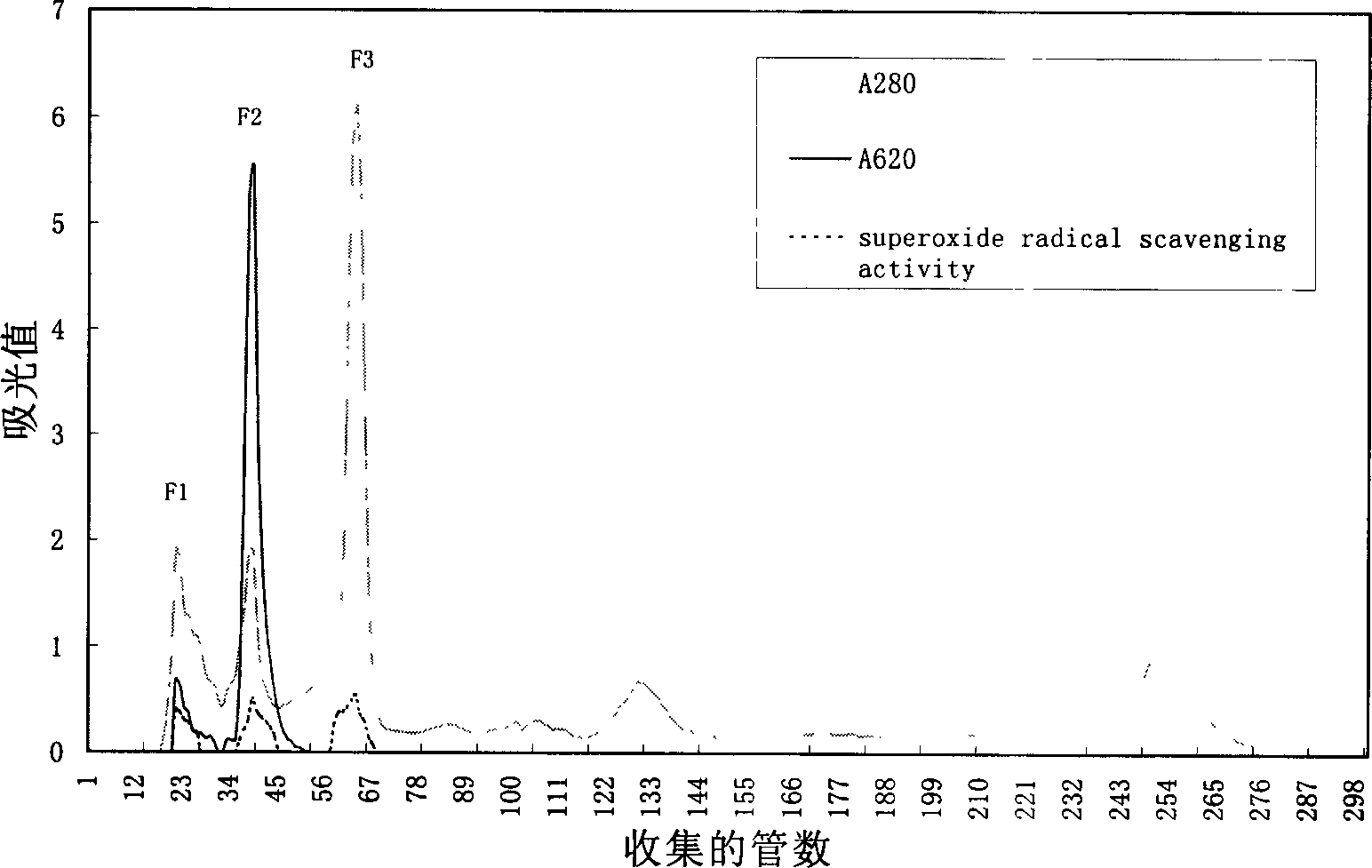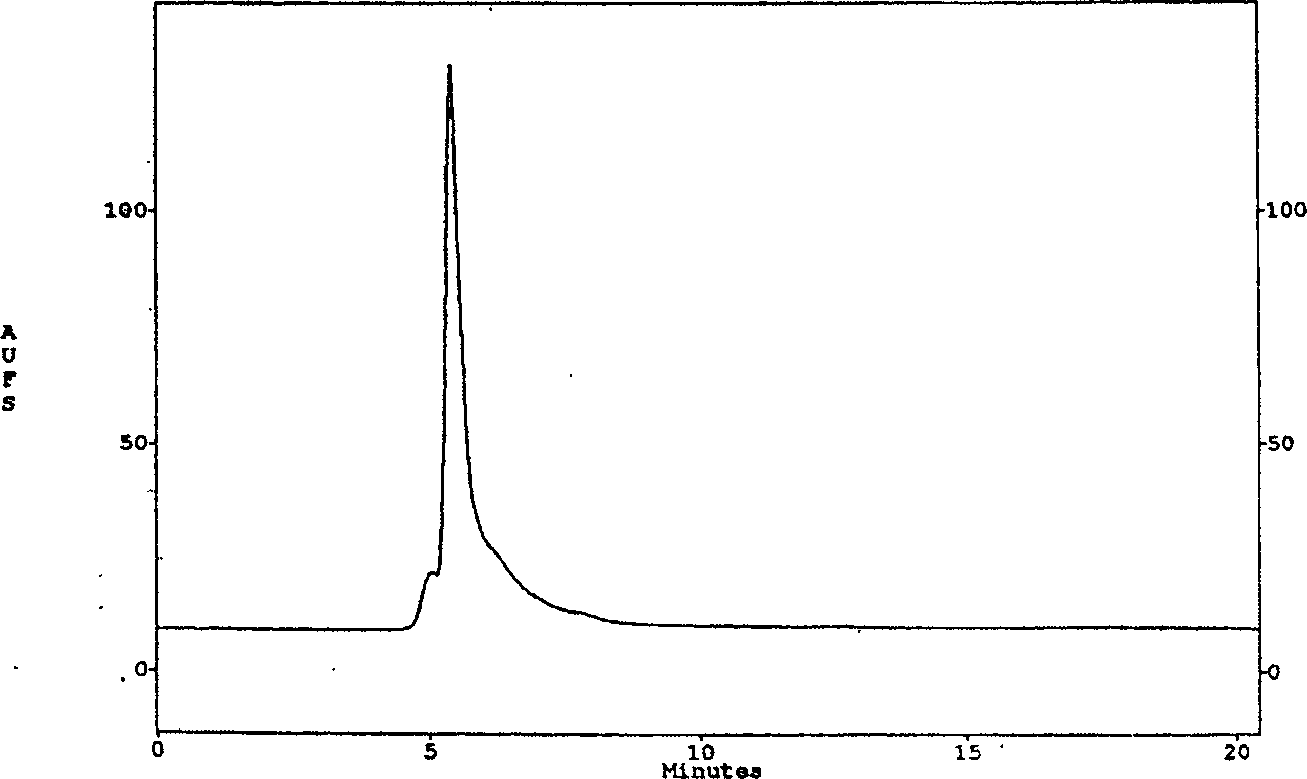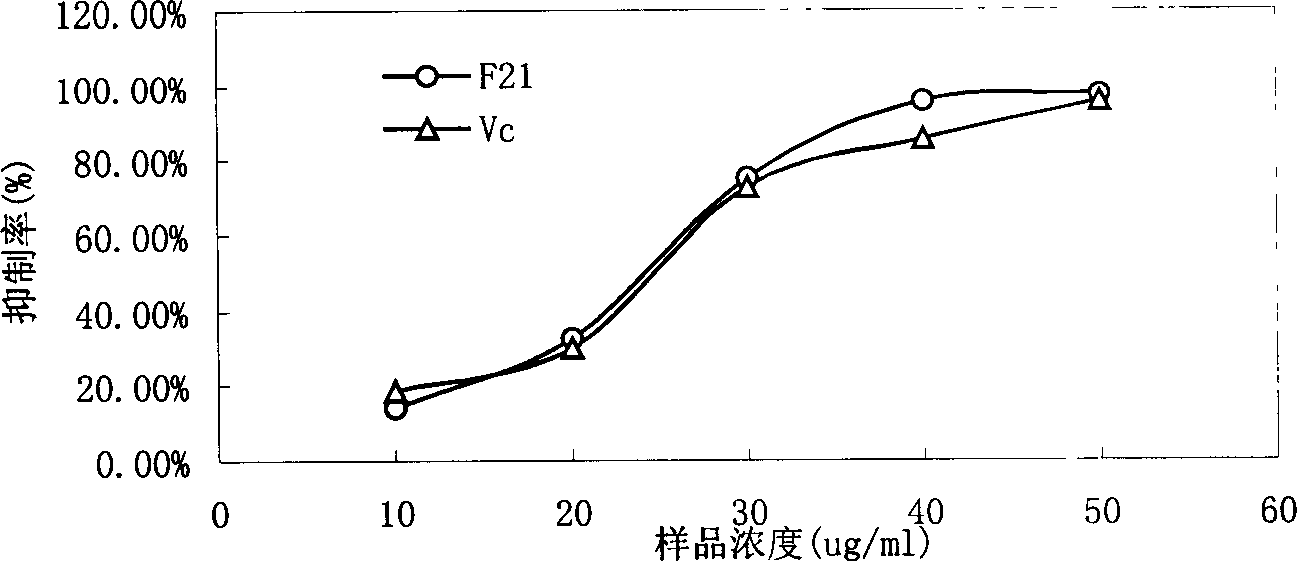Rose extract and its application
A rose flower extract and extract technology, applied in the field of rose flower extract, can solve problems such as no reports, and achieve the effects of abundant plant resources, efficient removal of superoxide anions, and easy extraction
- Summary
- Abstract
- Description
- Claims
- Application Information
AI Technical Summary
Problems solved by technology
Method used
Image
Examples
Embodiment 1
[0019] Rose flower extract (F 21 ) preparation and purification
[0020] Collect the plant roses produced in Fujian, chop the dried plant flowers, soak them in water, and boil them under reflux for 2 hours. , manufactured by Beijing Sihuan Scientific Instrument Factory).
[0021] Take 50mg of dry powder and dissolve it in an appropriate amount of ammonium acetate buffer (10mM, pH4.5), load it on a CM-32 cation exchange cellulose chromatography column, and then use 10mM pH4.5, 200mM pH4.5, 400mM pH8. 0 ammonium acetate buffer solution to elute sequentially, automatically collect step by step, and measure the antioxidant activity of each tube.
[0022] The separated active substance was applied to a Sephadex G-75 chromatographic column, collected by elution with phosphate buffer (50 mM, pH 7.0), and freeze-dried.
[0023] The composition of the extract is determined
[0024] f 21 Three kinds of active ingredients F were separated through the above-mentioned CM-32 cation exc...
Embodiment 2
[0064] Select SAM mice (provided by Tianjin Disease Prevention Center) male, 8 months old as experimental animals to group, 6 in the administration group, 6 in the control group, rose extract (F 21 ) was added with water to make an appropriate aqueous solution, administered by intragastric administration for 30 days, the dosage was 80 mg / kg bw, and the control group was given normal saline at the same dose, once a day, and the mice in each group were taken from the liver at the same time on the 31st day. 10% liver tissue homogenate (w / v) was prepared from the tissue, and the supernatant was taken after refrigerated centrifugation. The supernatant was diluted 100 times in volume to obtain 0.1% interstitial fluid. The method of total SOD activity determination is as follows:
[0065] Reagent Assay tube (ml) Control tube (ml)
[0066] PBS 1.0 1.0
[0067] Tissue homogenate supernatant 0.03
[0068] Distilled water 0.5 0.5+0.03
[0069] ...
Embodiment 3
[0078] The selection, grouping, administration and administration time of the mice were the same as in Example 2. After 30 days of administration, the experimental mice were killed by neck dislocation, and the liver tissue was taken to make 10% liver homogenate. After centrifugation, 1ml of the supernatant was taken, and 10μl of absolute ethanol was added. 100 110μl, ice bath for 5 minutes. Dilute the sample 200 times and add to the reaction system, add 2ml of enzyme solution to the assay tube, mix with 1ml of 10mM PBS, measure the change of absorbance at 240nm for 30 seconds, and calculate the CAT enzyme activity.
[0079] The average CAT enzyme activity of the 6 mice in the treatment group was 491.01K / g.Hb, and the average CAT enzyme activity of the 6 mice in the control group was 361.20K / g.Hb. The average activity of the CAT enzyme in the treatment group was 129.81K higher than that of the control group / g.Hb.
PUM
 Login to View More
Login to View More Abstract
Description
Claims
Application Information
 Login to View More
Login to View More - R&D
- Intellectual Property
- Life Sciences
- Materials
- Tech Scout
- Unparalleled Data Quality
- Higher Quality Content
- 60% Fewer Hallucinations
Browse by: Latest US Patents, China's latest patents, Technical Efficacy Thesaurus, Application Domain, Technology Topic, Popular Technical Reports.
© 2025 PatSnap. All rights reserved.Legal|Privacy policy|Modern Slavery Act Transparency Statement|Sitemap|About US| Contact US: help@patsnap.com



